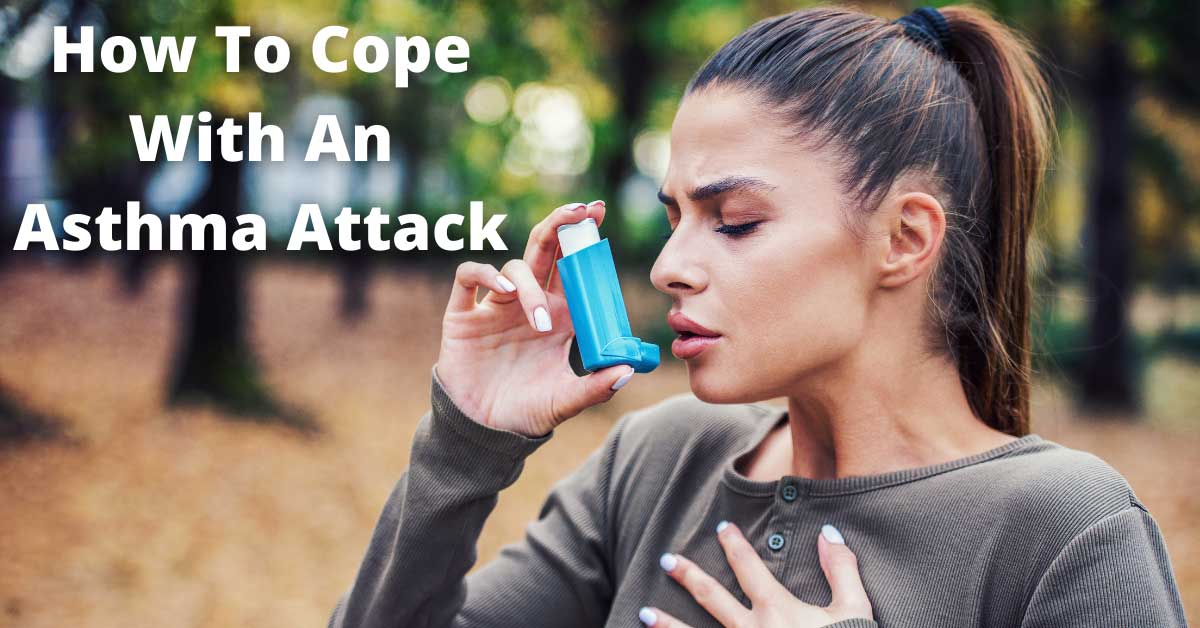How to Cope With An Asthma Attack
The Ultimate Guide To Managing An Asthma Attack
Introduction
Asthma is a condition that can become life-threatening when it becomes severe. Because there is no cure for asthma and often no warning of an impending attack, you need to learn how to cope with an asthma attack.
Managing an asthma attack can be difficult because the main symptoms of an impending asthma attack are often mistaken for other conditions like a heart attack, heatstroke, and changeable blood sugar levels.
Most people are familiar with the common asthma symptoms like coughing, wheezing, and chest tightness; however, there are other less common symptoms that you should be aware of as well.
Here are some tips on what to do in case of an asthma attack and how to prevent them from becoming so threateningly severe that they require specialist medical attention to bring them under immediate control.
What are the symptoms of an asthma attack?
Symptoms of an asthma attack include:
- Chest tightness- Chest tightness is any discomfort that can be found in the regions in between your lower neck and upper abdomen.
It can vary with how it feels and how often it occurs; some people might feel the sensation more all over their chest area, while others may only notice the feeling in one particular spot.
- Shortness of breath- The frightening sensation of feeling suffocated is described as shortness of breath. Shortness of breath can come from various reasons, like chest pain or even be triggered by cold weather.
- Coughing- Airways in people with asthma may secrete a lot of mucus and interfere with standard breathing patterns.
The typical cough is dry, but they may also have hyper-secretions that can cause their airway to clog up and cause shortness of breath.
- Wheezing can occur when a person experiences obstruction or inflammation of the airway passage.
It causes difficulty in breathing and may happen after exposure to a trigger that causes swelling and tightening of the passages, making it difficult for you to breathe normally again.
Asthma Action Plan
An asthma action plan can be implemented at any onset of these symptoms.
Suppose you are in a situation where your symptoms are severe, and you cannot breathe. In that case, the very first thing you should always do, where possible, is to call for emergency services as soon as possible.
Symptoms typically worsen when the air quality is poor, so it’s best to avoid outdoor activities when air quality is poor.
How To Cope With An Asthma Attack
The best way to cope with an asthma attack is to recognise your symptoms and know how to respond to them appropriately.
Here is a list of proactive and reactive things you can implement both before and during an asthma attack that may stop it from becoming severe enough to warrant medical interventions:
- Wear A Medic Alert Bracelet- alert medical bracelets can give a medical person or a lay first aid responder immediate information about your medical conditions if you cannot communicate during an asthma attack, which can assist in your prompt and appropriate response primary care.
- Steer Clear Of Triggers- All people who have asthma will find that they have different triggers.
This can be anything from cold weather to certain chemicals or fragrances or even a reaction to a rapid temperature change from inside to outside.
Staying clear of anything that triggers an asthma attack will help reduce the attacks’ frequency and severity.
- Sit Up Straight- Sitting is always advised before or during an asthma attack as it reduces the risk of falling to the floor, as you will already be there.
Sitting up straight helps to elongate and open up the airways as much as possible, which may help your breathing efforts.
- Puff your reliever inhaler- (usually blue asthma medication) up to 10 times back-to-back.
Release a puff of medication in each lung breath, which helps to ease symptoms and relieve breathing difficulties.
- If you feel worse after puffing for ten seconds or do not start feeling better 10 puffs in, call 999 for an ambulance.
If you are experiencing any severe shortness of breath, difficulty breathing, coughing up blood, or vomiting, then please dial 999 immediately and wait patiently and calmly until help arrives.
How To Cope With A Severe Asthma Attack
Severe asthma attacks are often mistaken for other conditions like a heart attack and stroke and often require medical intervention to get them under control and keep them managed through to recovery.
If you know you have severe asthma attacks, it’s essential to know what to do.
The most common time for an asthma attack is when you’re exercising or sleeping.
When you have a severe asthma attack, staying with your breathing is vital, and calling for medical assistance must be timely.
You should be aware of your symptoms of an asthma attack so that if one happens, you can immediately recognize the signs and respond quickly and appropriately.
Suppose the attack is severe enough to obstruct your breathing completely. In that case, it can be life-threatening, so some other indicators of severity can be:
- Cyanosis, especially of the lips
- Tingling in the extremities starts in the fingers and toes and travels towards the heart.
- Deep-set panic and the fear that you are being suffocated/drowning
- Blurred vision
- Fainting or feeling faint
- Loss of consciousness
Conclusion
Asthma is a condition that can become life-threatening when it becomes severe.
As there is no cure for asthma and often no warning of an impending attack, you need to learn how to cope with this condition – managing an asthma attack can be the most important thing you can do yourself, and teach your friends and family to do.
The management of asthma can be complex because the main symptoms of an impending asthma attack are often mistaken for other conditions like a heart attack, heatstroke, or changeable blood sugar levels.
Most people know about the common asthmatic symptoms like coughing and wheezing; however, less well known are others such as chest tightness which should be observed before any assumptions about what might have caused them made by yourself or others around you.
Make sure you have an asthma action plan in place, just in case.


